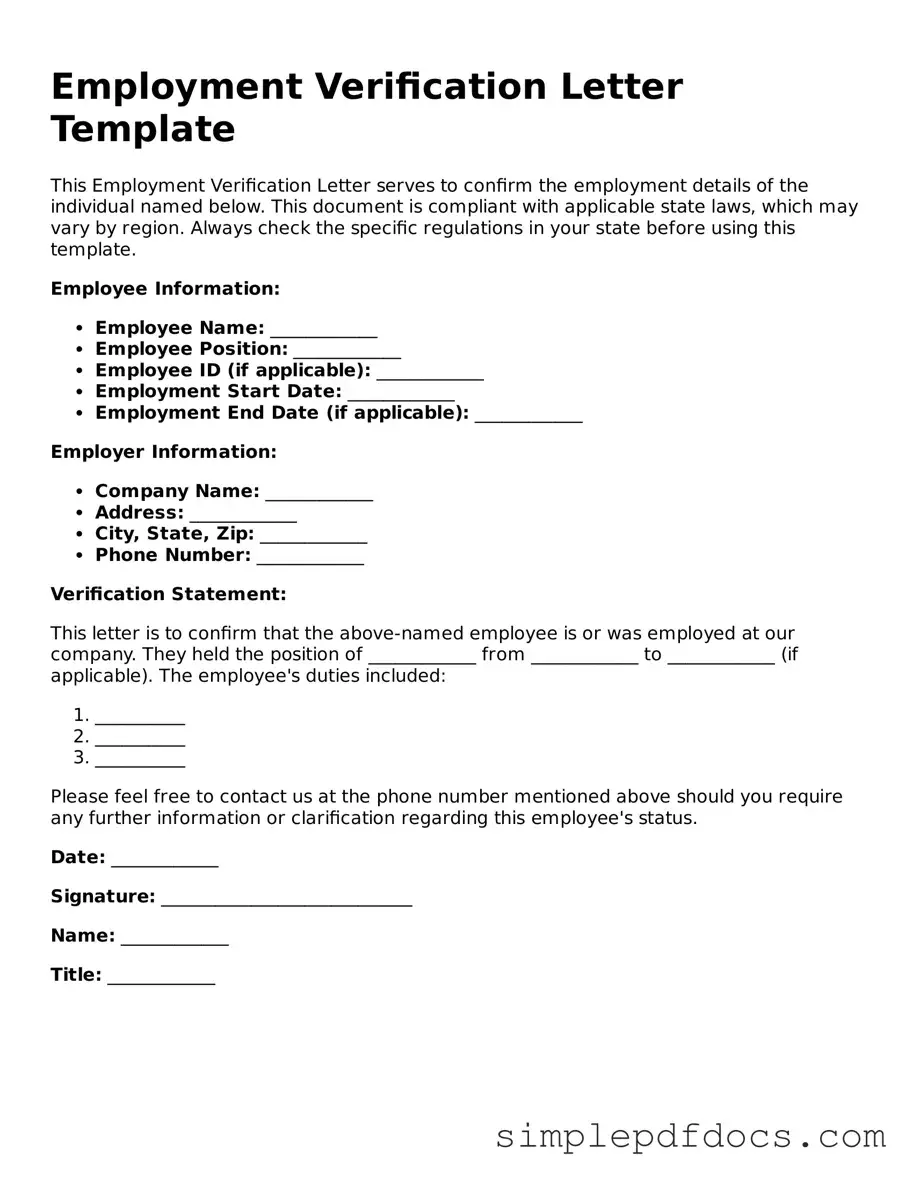When navigating the job market, understanding the Employment Verification form is essential for both employers and employees. This document serves as a crucial tool in confirming an individual's work history, job title, and sometimes even salary details. Employers typically request this form to ensure that potential hires possess the qualifications they claim. Meanwhile, employees may need to provide this verification when applying for loans, renting apartments, or seeking new job opportunities. The form usually includes sections for the employee's personal information, details about the employer, and the nature of the verification requested. It is important for both parties to handle this process with care, as accurate information fosters trust and transparency in professional relationships. Knowing how to fill out and respond to this form can significantly impact one's career journey, making it a vital aspect of employment practices.
